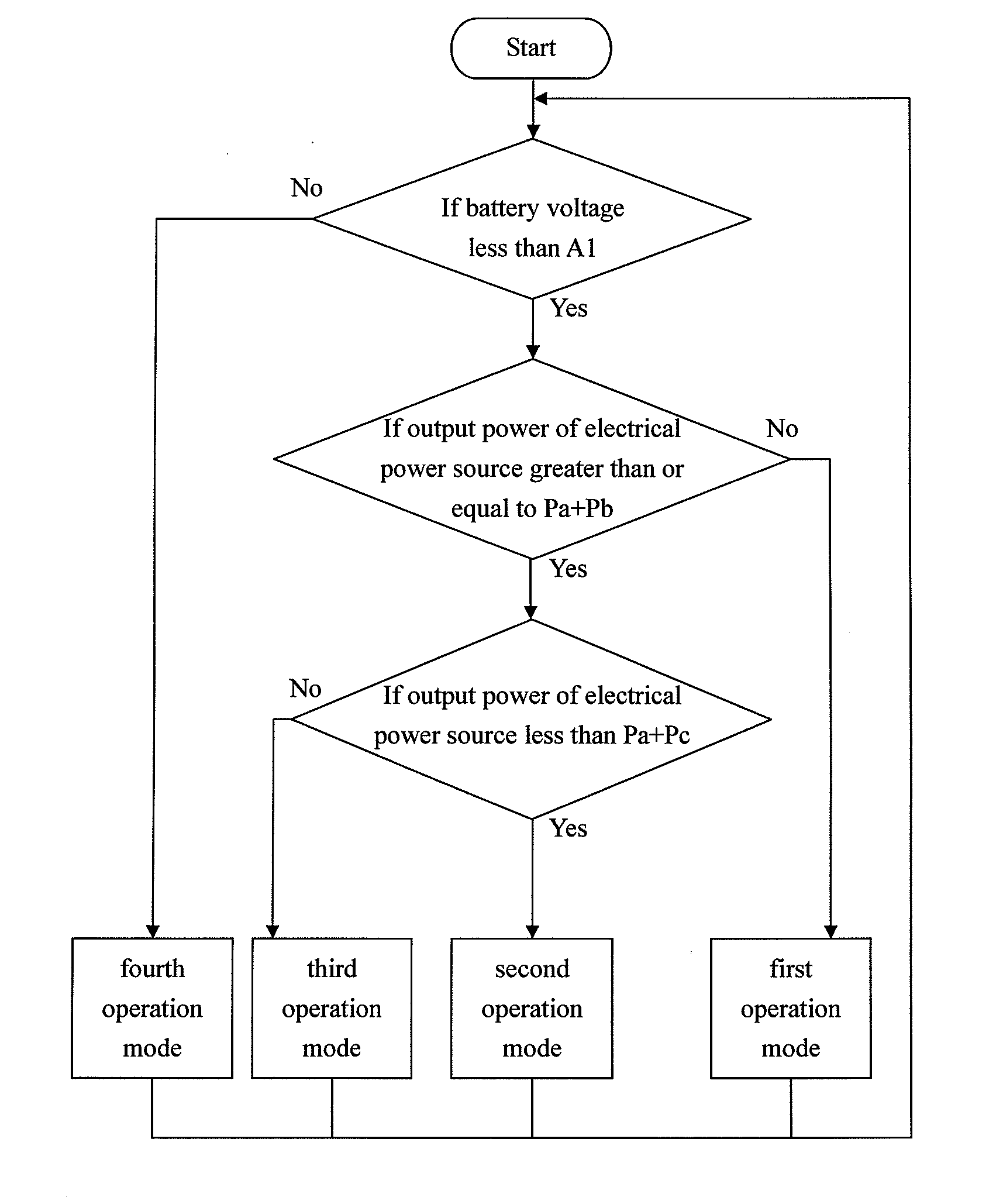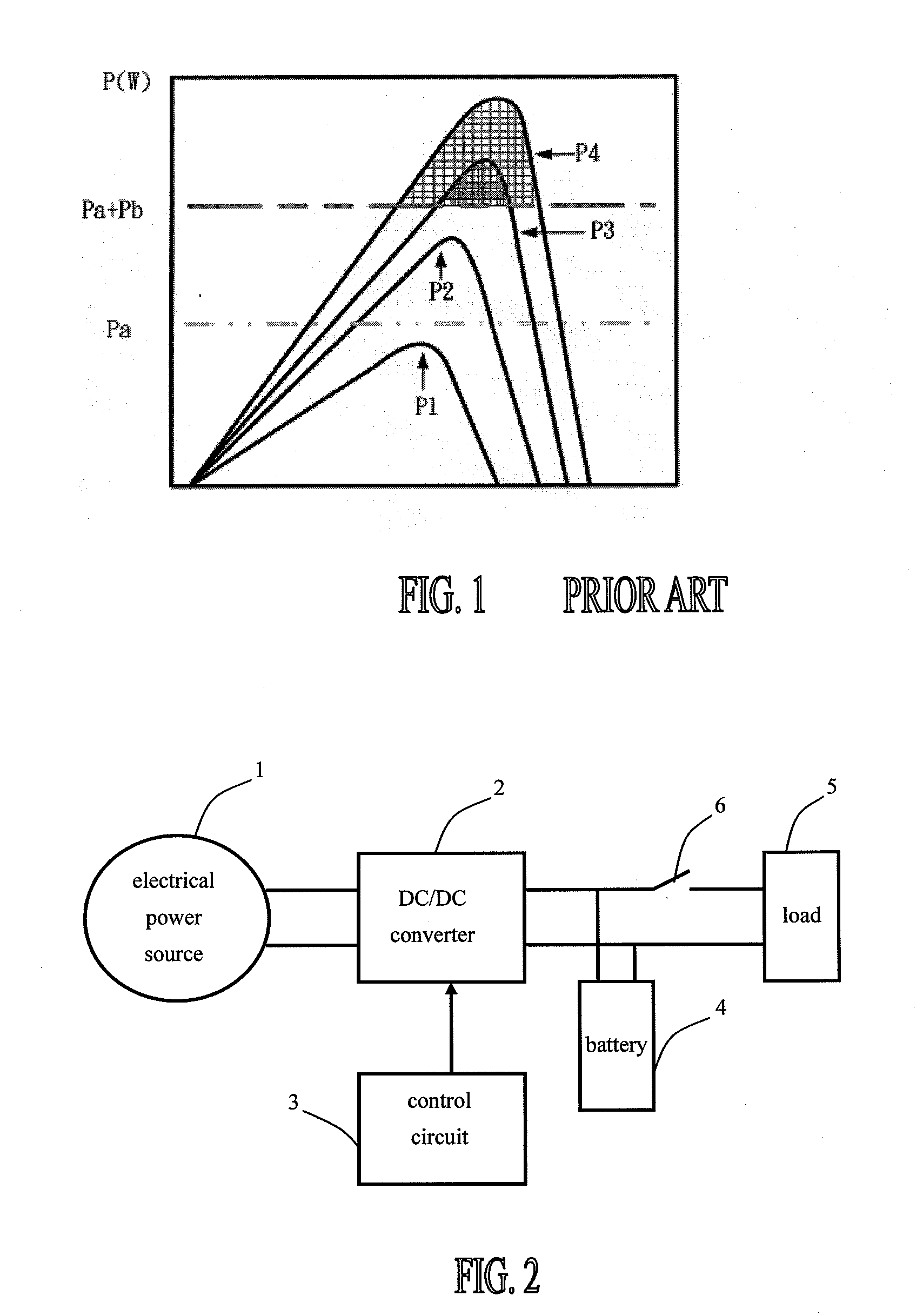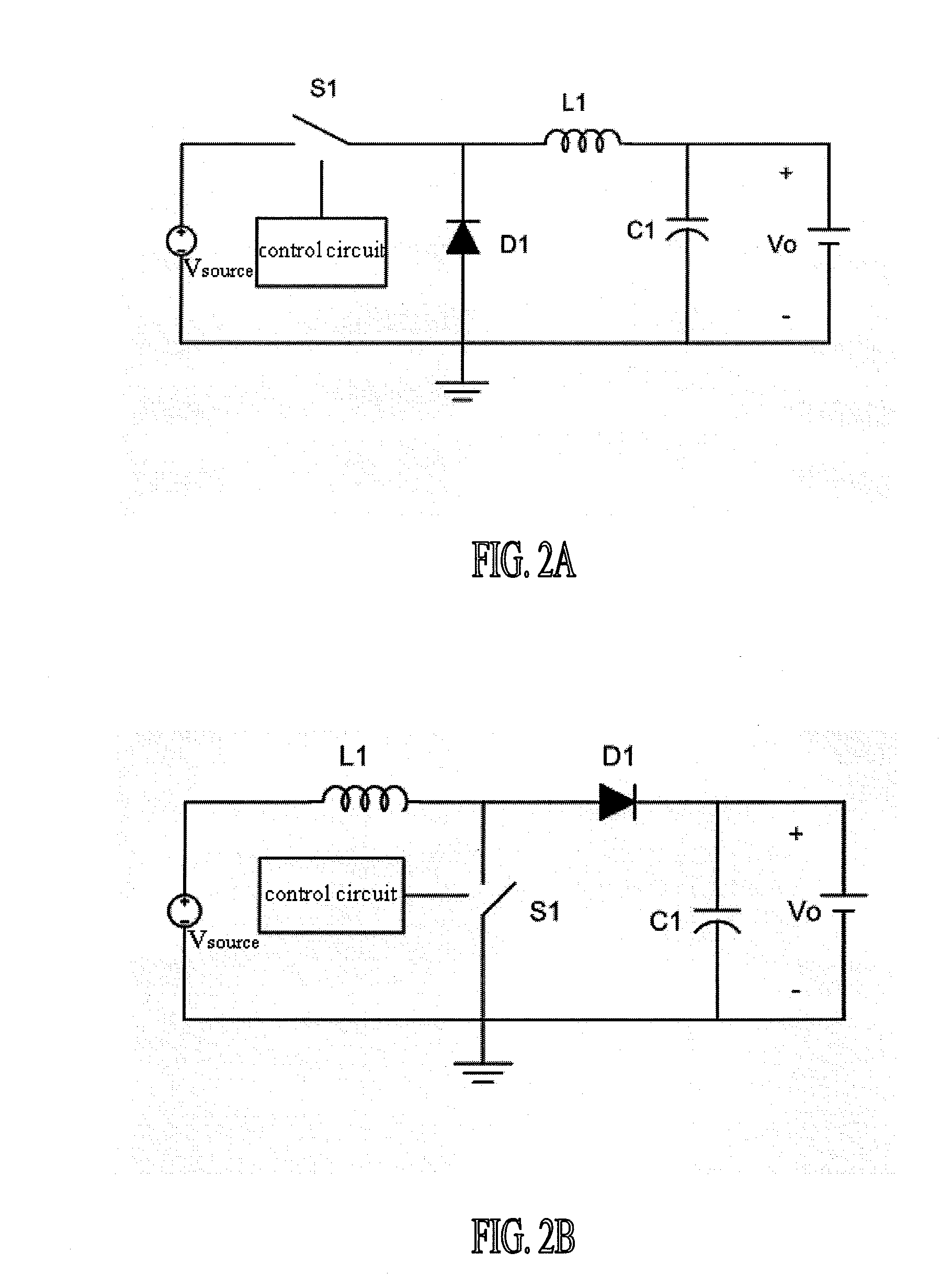Battery-Charging Device for a Stand-Alone Generator System having a MPPT Function and Method Thereof
a generator system and standalone technology, applied in battery overheating protection, secondary cell servicing/maintenance, safety/protection circuits, etc., can solve the problems of constant current charging method having a drawback of overcharge, damage to batteries, and shorten the life of batteries, so as to simplify the entire hardware circui
- Summary
- Abstract
- Description
- Claims
- Application Information
AI Technical Summary
Benefits of technology
Problems solved by technology
Method used
Image
Examples
Embodiment Construction
[0031]Throughout the specification, the terms “battery-charging device” and “battery-charging method,” as used herein, is applied to a stand-alone generator system having a MPPT function for using in electric power generated by wind energy, solar energy or other renewable energy which are not limitative of the present invention. The term “battery,” as used herein, will be understood to imply the inclusion of a battery unit or a battery set.
[0032]Referring now to FIG. 2, a battery-charging device for a stand-alone generator system having a MPPT function in accordance with the preferred embodiment of the present invention includes an electrical power source 1, a DC / DC converter 2, a control circuit 3, a battery 4 and a switch 6. The electrical power source 1 is used to supply a DC power, and is selected from a solar cell array or a wind power generator system provided with a rectified circuit. An input of the DC / DC converter 2 electrically connects with an output of the electrical pow...
PUM
 Login to View More
Login to View More Abstract
Description
Claims
Application Information
 Login to View More
Login to View More - R&D
- Intellectual Property
- Life Sciences
- Materials
- Tech Scout
- Unparalleled Data Quality
- Higher Quality Content
- 60% Fewer Hallucinations
Browse by: Latest US Patents, China's latest patents, Technical Efficacy Thesaurus, Application Domain, Technology Topic, Popular Technical Reports.
© 2025 PatSnap. All rights reserved.Legal|Privacy policy|Modern Slavery Act Transparency Statement|Sitemap|About US| Contact US: help@patsnap.com



